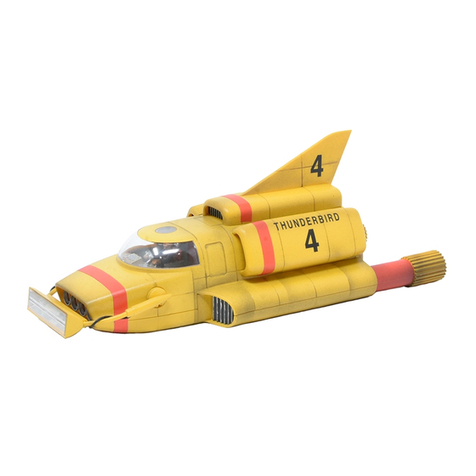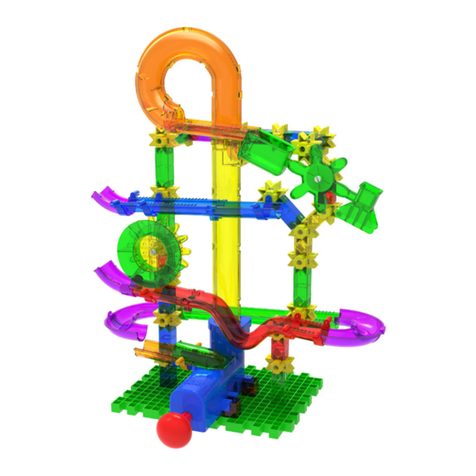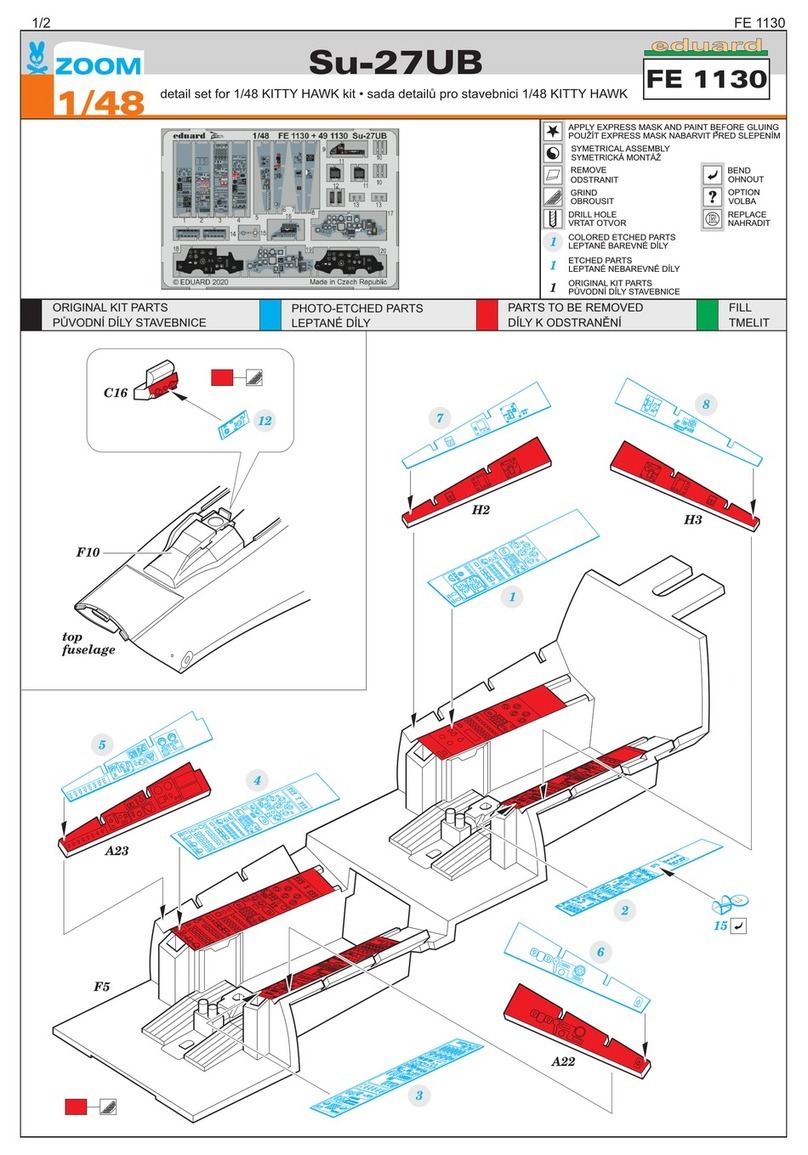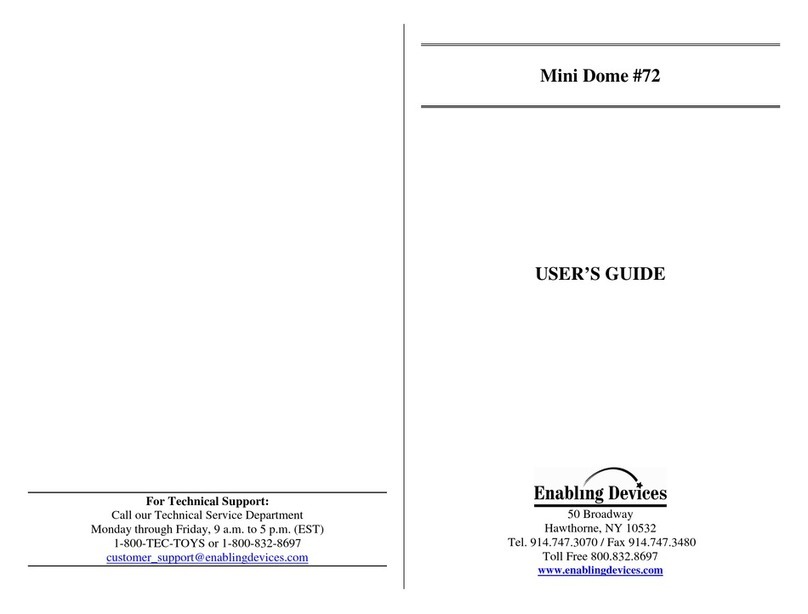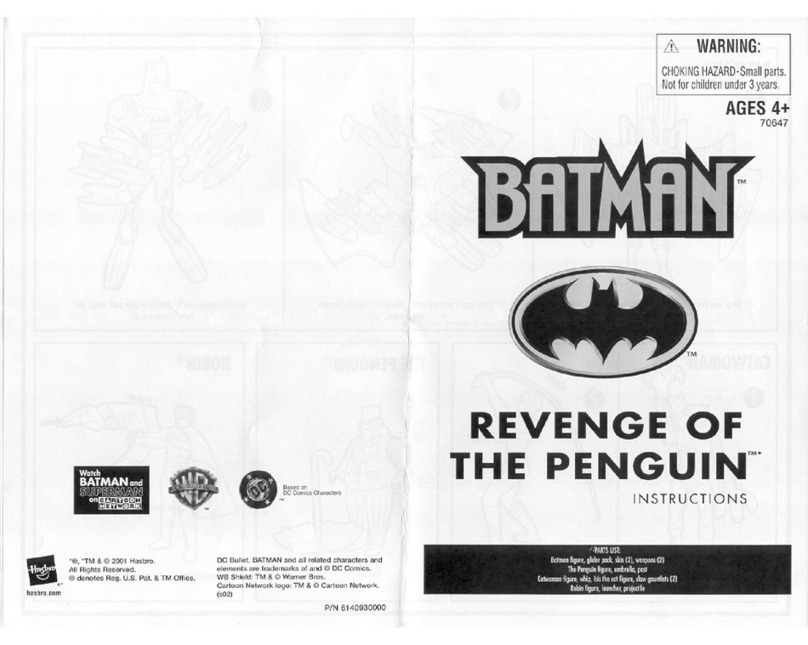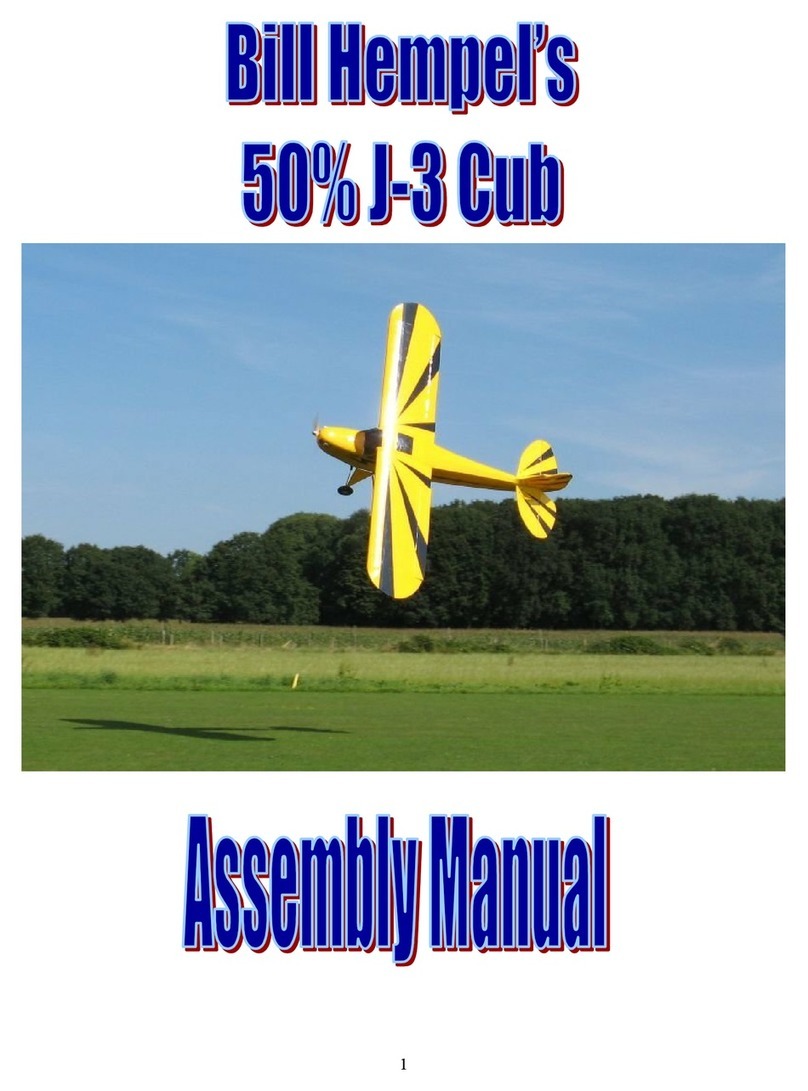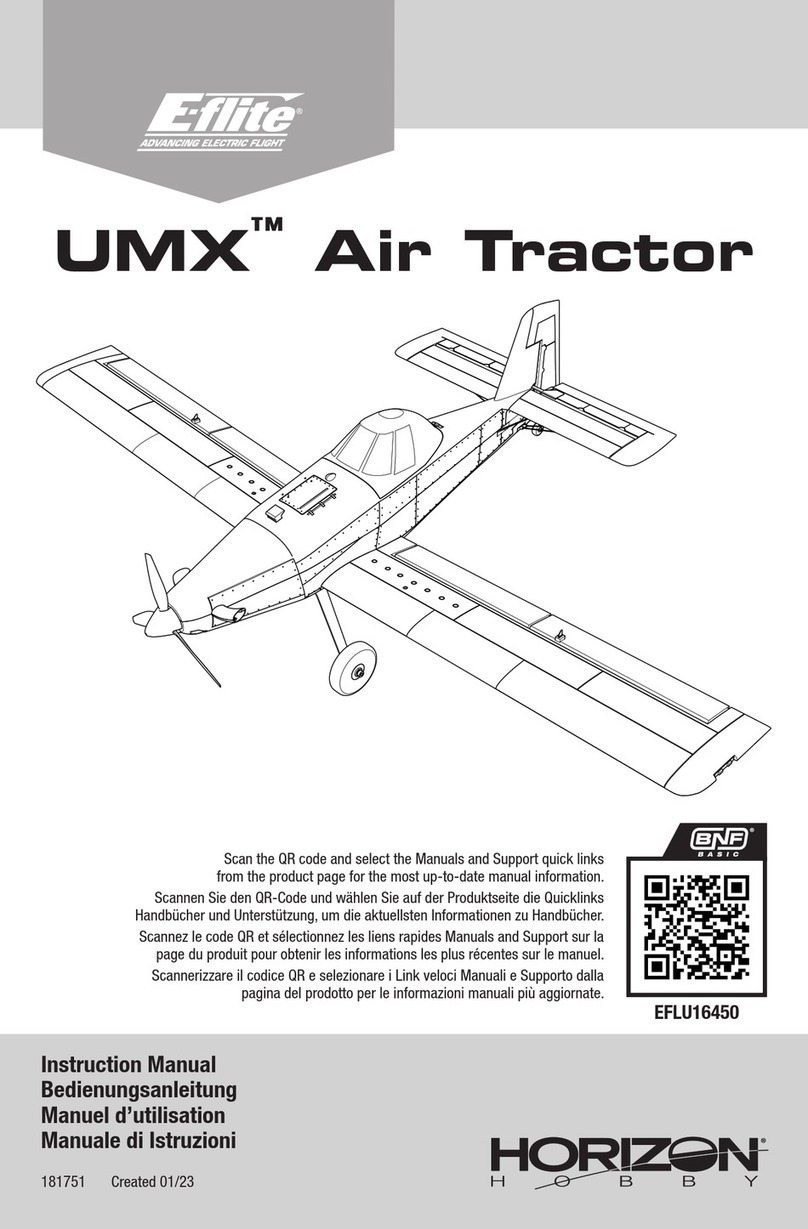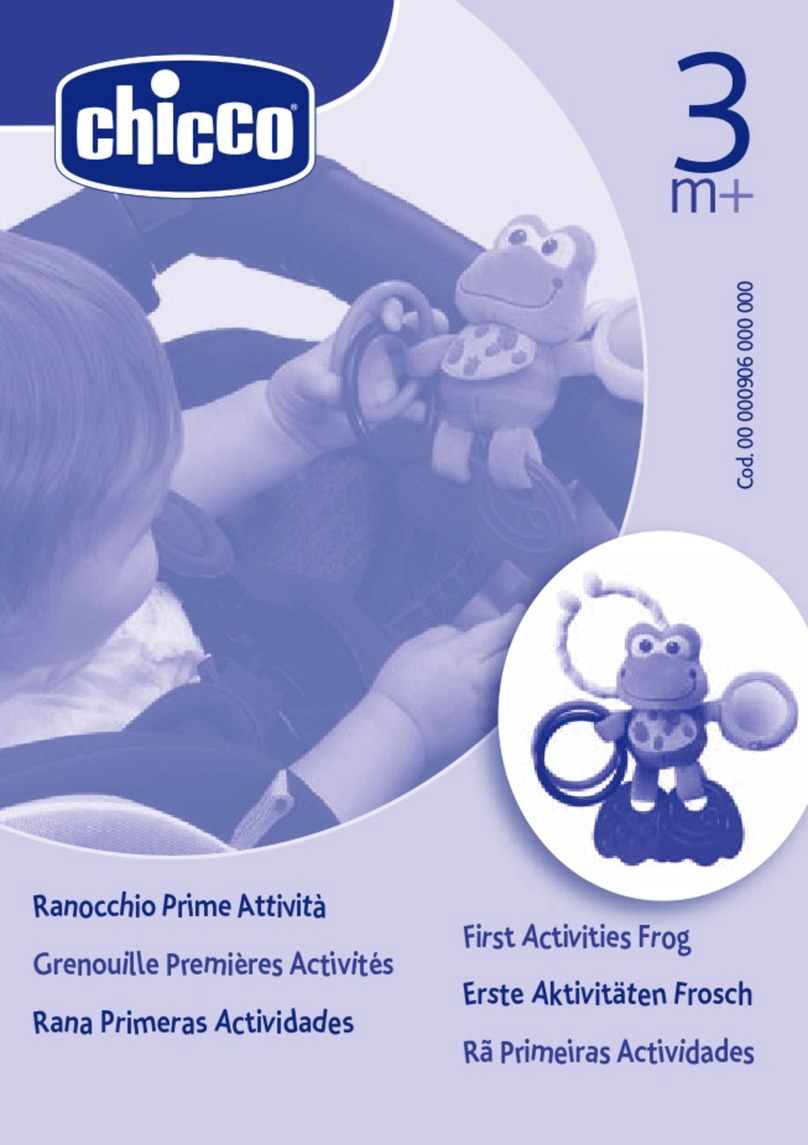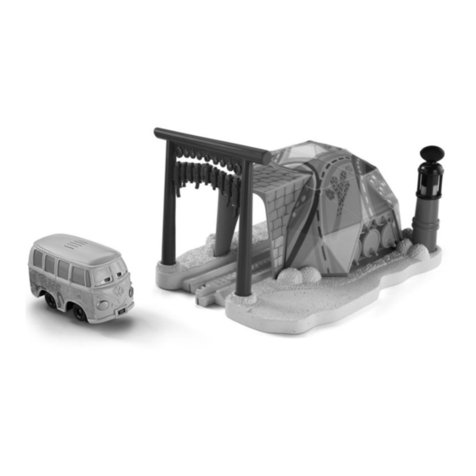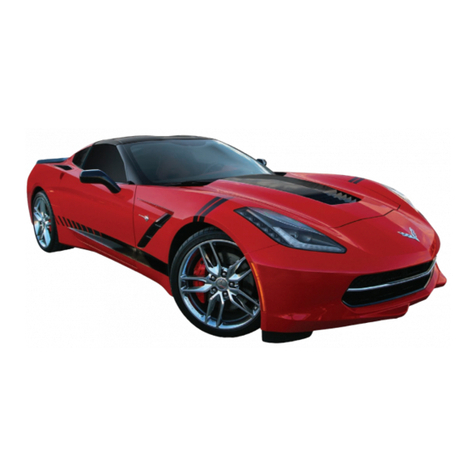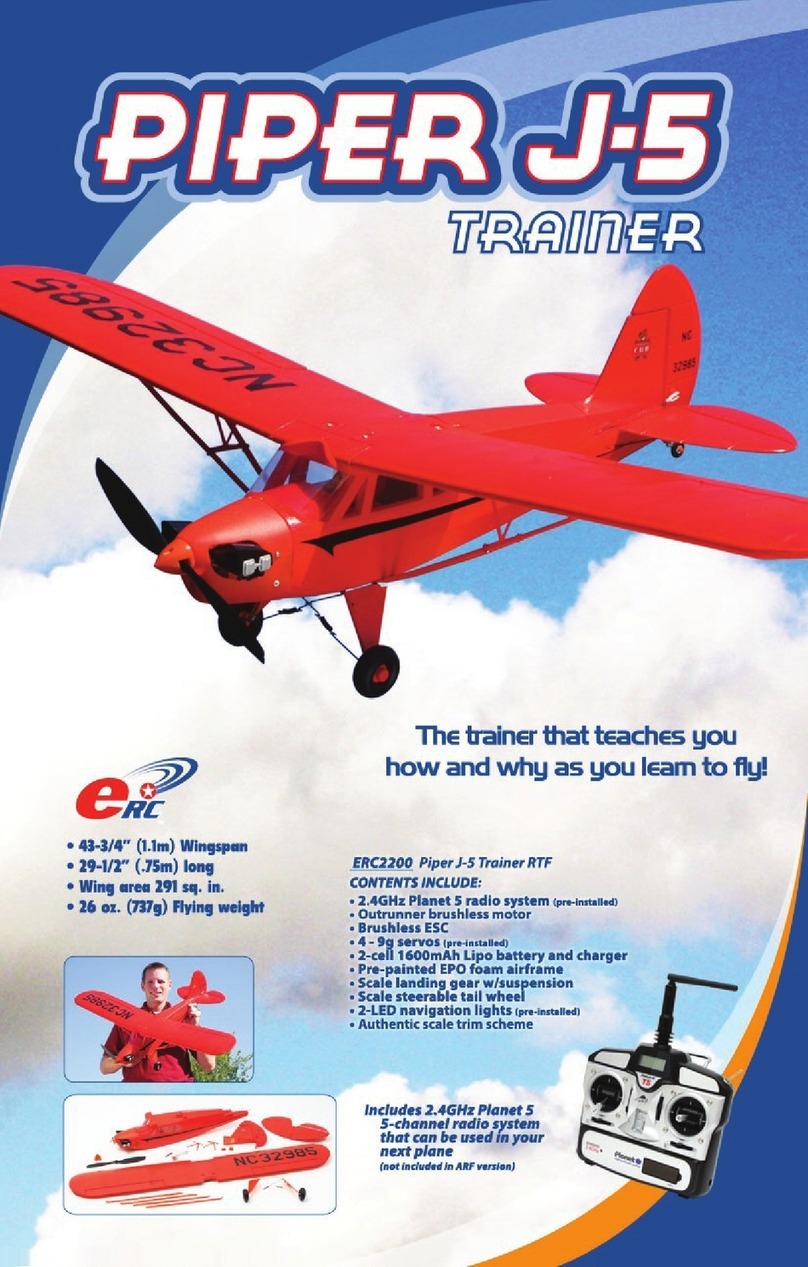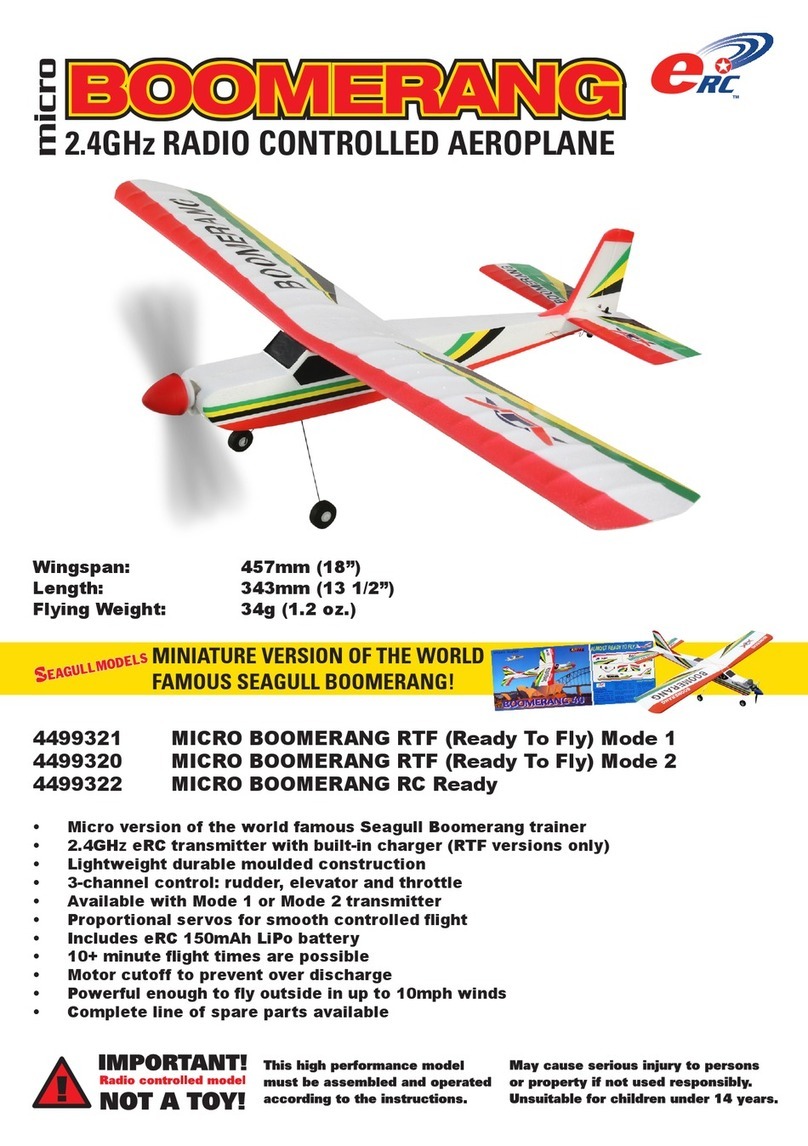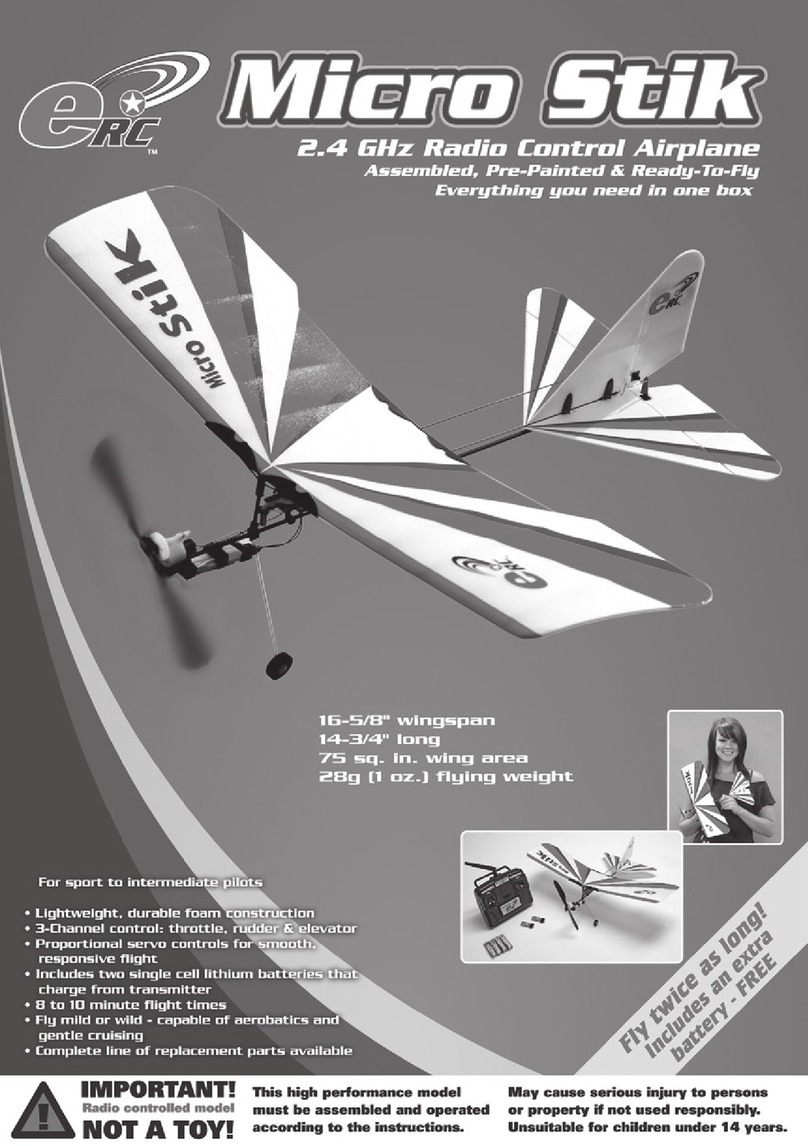
16
1.Aircraft assembled correctlyand readyforflight.
2.All controlthrowsand exposareset perthismanual.
3.Transmitterfullycharged and on correct model.
4.Aircraft balancesat the recommended location.
5.Flight batteriesarefullycharged and secure.
6.All controlsareoperating correctly, properdirection, and secure.
7.Completearadiorange check peryourradiomanual.
8.Wait foracalmorlight wind dayforfirst flights.
Flying
Werecommend that takeoffsand landingsbe made on LOWRATES. Initialflights
shouldbe made using LOWRATES until you arefamiliarwiththe aircraft. LOWRATES
allowyou toflysmoothpatternmaneuvers. The jet isverystablewithsolidhandling.On
HIGHRATES withthe functioning Canardsand ThrustVectoring turned on,the airplane
can performamazing maneuvers. High Alpha Harrierflight iseasy tosteerusing the
thrust vectornozzlesasyourelevatorand ruddercontrols. Flat spinsareeasily
accomplished using full rudderand up elevatorcombined withabit of oppositeaileron.
Example: Full left rudder, full up elevatorand someright aileron toperformaleft flat
spin. Exit the maneuverbyneutralizing the elevatorand aileron and applying slightright
rudder. Thisisalargersizemodeland requiresthe useof ascaletype landing
approach. Set up yourfinalapproachwithaslight nosehigh angleof attack and about
1/4throttle, allowthe jet tosettleapplying alittlethrottletoarrest the descent and touch
downon the maingearfirst. Ground handling issuperior.
2008 Official Academy ofModel Aeronautics National Model Aircraft SafetyCode
GENERAL
1. Amodelaircraft shall bedefinedasanon-human-carrying devicecapableofsustainedflight in theatmosphere. It shall
not exceedlimitationsestablishedin thiscodeand isintendedtobeusedexclusivelyforrecreationalorcompetition
activity.
2. Themaximumtakeoff weight ofamodelaircraft, including fuel, is55 pounds, except forthoseflownundertheAMA
ExperimentalAircraft Rules.
3. I will abidebythisSafetyCodeand all rulesestablishedfortheflying siteI use. I will not willfullyflymymodelaircraft in a
reckless and/ordangerousmanner.
4. I will not flymymodelaircraft in sanctionedevents, airshows, ormodeldemonstrationsuntil it hasbeenprovenairworthy.
5. I will not flymymodelaircraft higherthanapproximately400 feet aboveground level, whenwithin three (3)milesofan
airport without notifying theairport operator. I will yield theright-of-wayand avoid flying in theproximityoffull-scale
aircraft, utilizing aspotterwhenappropriate.
6. I will not flymymodelaircraft unless it isidentifiedwithmynameand address, orAMAnumber, insideoraffixedtothe
outsideofthemodelaircraft. Thisdoesnot applytomodelaircraft flownindoors.
7. I will not operatemodelaircraft withmetal-bladepropellersorwithgaseousboosts(otherthanair), norwill I operate
modelaircraft withfuelscontaining tetranitromethaneorhydrazine.
8. I will not operatemodelaircraft carrying pyrotechnicdevices, whichexplode, burn, orpropelaprojectileofanykind.
ExceptionsincludeFree Flight fusesordevicesthat burnproducing smokeand aresecurelyattachedtothemodelaircraft
during flight. Rocket motorsup toaG-seriessizemaybeused, providedtheyremain firmlyattachedtothemodelaircraft
during flight. Modelrocketsmaybeflownin accordancewiththeNationalModelRocketrySafetyCode; however, they
maynot belaunchedfrommodelaircraft. OfficiallydesignatedAMAAirShowTeams(AST)areauthorizedtousedevices
and practicesasdefinedwithin theAirShowAdvisoryCommittee Document.
9. I will not operatemymodelaircraft whileundertheinfluenceofalcoholorwithin eight (8)hoursofhaving consumed
alcohol.
10.I will not operatemymodelaircraft whileusing anydrug whichcould adverselyaffect myabilitytosafelycontrolmymodel
aircraft.
11.Childrenundersix(6)yearsold areonlyallowedonaflightlineorin aflight area asapilot orwhileunderflight instruction.
12.Whenand whererequiredbyrule, helmetsmust beproperlywornand fastened. Theymust beOSHA, DOT, ANSI,
SNELL orNOCSAE approvedorcomplywithcomparablestandards.
RADIOCONTROL
1. All modelflying shall beconductedin amannertoavoid overflight ofunprotectedpeople.

















